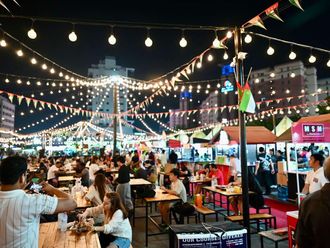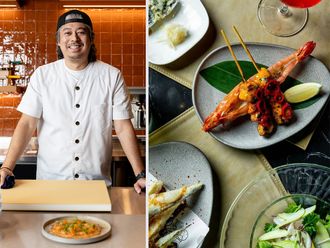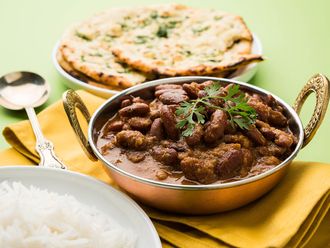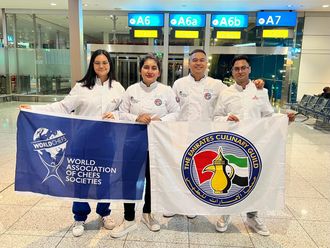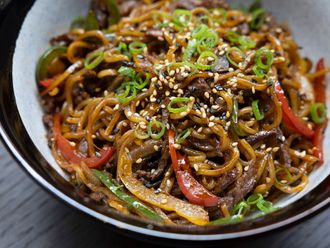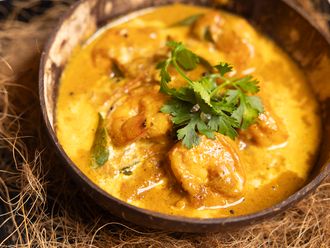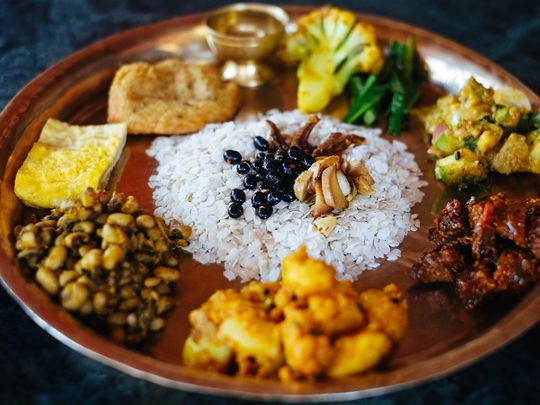
Dubai: Climbing Mount Everest may seem like a farfetched idea, but there is one thing you can do to get closer to the Himalayas – eat Nepalese Momos. These juicy and steaming dumplings from the mountainous nation are a burst of flavours.
You may have come across this dish across many South Asian restaurants in the UAE. Gulf News spoke to some expatriates from UAE’s small Nepalese community. They showed us how their community is preserving the culinary tradition of the Himalayan nation by cooking it regularly.
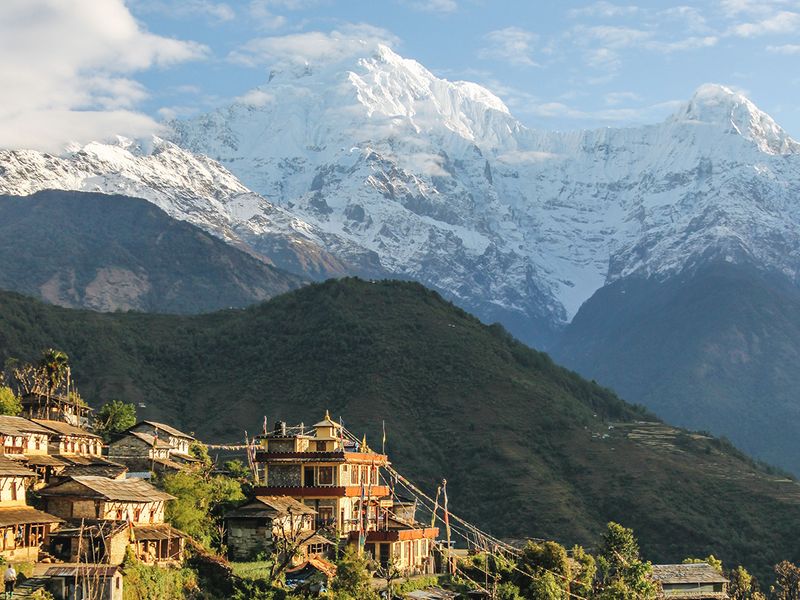
Pasang Sherpa, a 36-year-old Nepalese expatriate and restaurant owner was one of them. He moved to Dubai a decade ago and preserves Nepal’s food culture by training cooks to use authentic recipes at his restaurant. He belongs to Nepal’s Sherpa community, largely known for their mountain guiding skills.
Like many from his community, Sherpa moved to the UAE for better prospects. However, he missed his hometown a lot initially, especially meals that consisted of simple dal bhat, tarkari (rice, lentils and vegetables). It was the day-to-day food that was hard to find here. After working many temporary jobs, he decided to start his restaurant, moving beyond momos (steamed dumplings). Though these steamed dumplings remain at the heart, he introduced authentic recipes from the many different tribes in Nepal.
Sherpa said: “Nepal has many tribes, nearly 125 to 150 tribes. I am from the Eastern part of Nepal, which borders India; it’s called Ilam (pronounced as ee-lam). The food and spices in this region is influenced by the neighbouring state – Bihar, especially the spices.” Ilam also happens to be known for its tea produce – Ilam tea.
The spices used in Nepalese cuisine are similar to those used in the East and North of India. Sherpa explained: “We use spices such as jeera (cumin), methi (fenugreek seeds), dhania (coriander seeds) in our everyday cooking. However, there is a spice, unique to this region, and they look quite similar to black peppercorns but are different - timur.”

The food and spices in this region are influenced by the neighbouring state – Bihar, especially the spices.” Ilam also happens to be known for its tea produce – Ilam tea.
Timur is a spice grown in the Himalayan regions. They come from the same family as Szechuan pepper and have a tongue-tingling, intense citrusy and grapefruit note. People in Nepal use it in dry vegetable dishes, tomato-based curries and meat dishes.
Connecting food and people
The Himalayan country’s food is formed by the different communities that live there. For instance, the khas community has its own cuisine. There is Tibetan influenced or Himalayan cuisine, Thakali cuisine - transitional between Himalayan and lowland cuisines, Newa cuisine of the Newar people, Lohorung cuisine, Limbu cuisine and Terai cuisine.
Every region has a popular dish, and the only way to keep them alive is by cooking them regularly.
A typical meal and one of the most popular meals if you were to visit Nepal is their thali. The word thali derives its name from the Hindi language, which means plate. In Nepal, thali is a meal traditionally served on a brass plate, with various food items such as rice, dal (lentil), vegetables, homemade achar (pickles), and more. You can find vegetarian and non-vegetarian thalis. In a non-vegetarian thali, you can mostly find chicken curries or buffalo meat. Sherpa explained: “When it comes to meat dishes, we eat Buffalo meat. It is called buff regionally and happens to be a delicacy.” Momos filled with buff meat are also very popular in Nepal. Being a speciality of this Himalayan region, Sherpa depends on importing buff meat from Nepal to the UAE every winter.
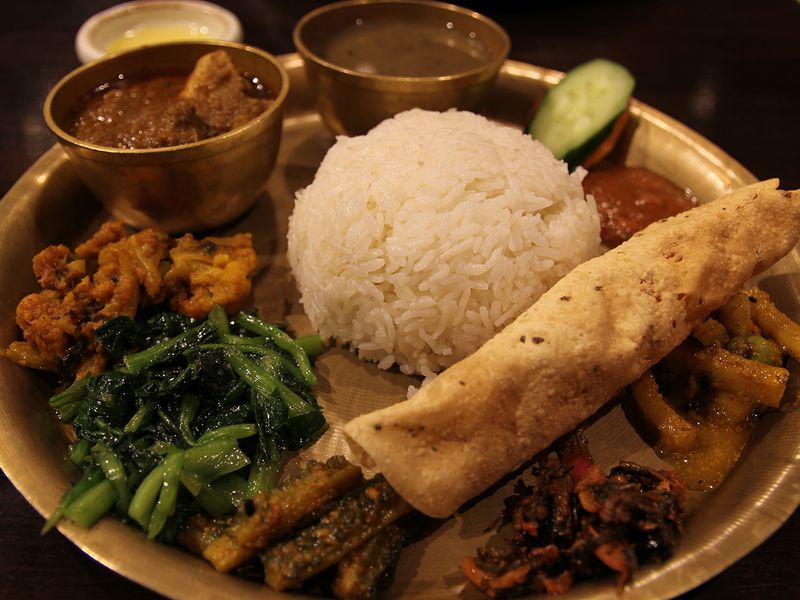
Like many Nepalese, Sherpa loves his thali, but there is one dish that is his absolute favourite – falgi. This is a soup-based dish made using corn, various beans (legumes) and buffalo meat, spiced with timur chutney. A rich source of protein and nutrients.
Growing up in Ilam, Sherpa saw people in his neighbourhood wake up early in the morning - as early as 3am and 4am - to take their cattle to the farm. Kickstarting their day early meant more energy to sustain long and laborious hours, thus a wholesome meal like falgi became the go-to meal of Nepalese.
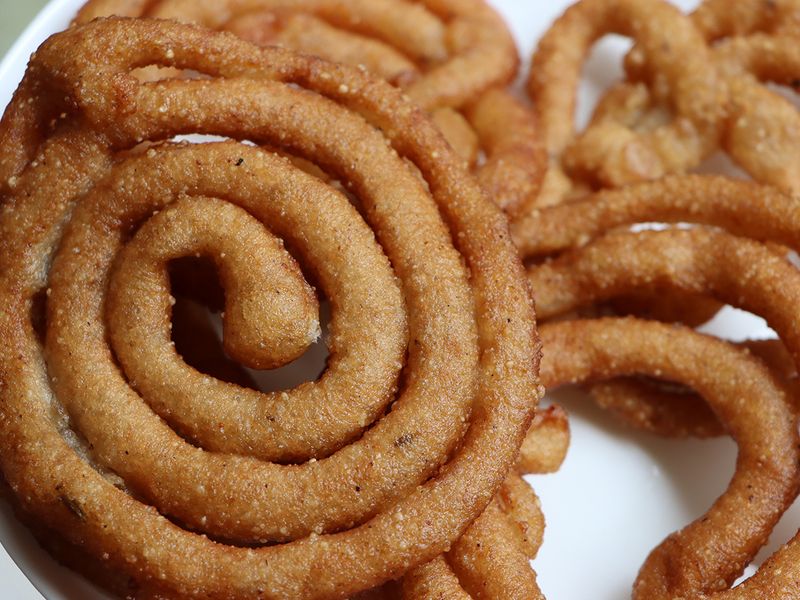
Typically, breakfast in Nepalese homes are simple and not the most important meal. But they do love their piping hot cup of milk-based chai or tea in the mornings. This hot beverage is usually accompanied by deep-fried sweet or savoury dishes. Mornings are generally for on-the-go breakfast, so to speak. Sherpa explained: “In the mornings, we usually eat bread made from ragi (buckwheat), sel roti (ring-shaped deep-fried sweet rice flour bread) and gwaramari or savoury deep-fried dough balls, like fritters, which is popular in the Newar region of Nepal.” Another small bite for breakfast in Nepal is Ponche, a fluffy well-done bao with minced meat. Much like the Chinese, bao buns.
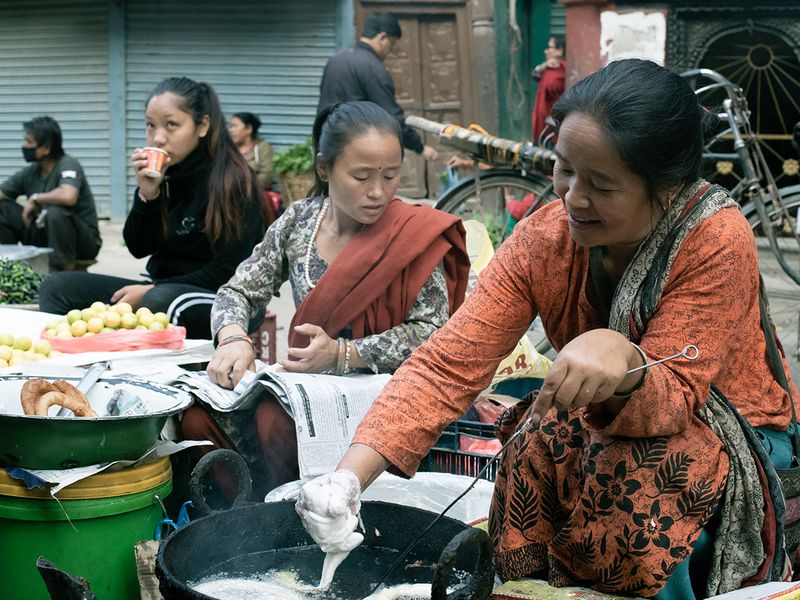
As the day progresses, lunch preparation begins in full swing. Nepalese lunches are usually rice-based, a full meal of many assortments, and thakali sets (thalis) rule. Thakali is derived from thak kola - a region in Mustang, North of Nepal. A thakali set has – cooked rice or bhat, dal or black lentils, mildly spiced meat gravy and gundruk (dehydrated and fermented spinach) cooked with soybeans and tomatoes, a portion of thinly sliced, deep-fried potatoes called – alu bhujur and dhedo (cooked buckwheat dough), served with a dollop of ghee or clarified butter. A meal so popular that it was made into a famous catchphrase - Dal bhat power twenty-four hour (Eat dal bhat, and get the power of energy for 24 hours).
Nepal’s culinary pride – Momos

A kind of steamed dumplings, for Nepalese, this dish holds a special place in their hearts. It is food and memories wrapped with nostalgia. Prakash Sharma Wosti, 33, from Kathmandu, Nepal, owns a restaurant in Dubai and he said: “My favourite food is momos. Interestingly, these dumplings do not fall under the category of snacks or main course, and it is subjective, people eat momos when they want to."
While Wosti likes momos, there are two popular dishes that he loves to cook and eat. They are – Choila and Khasi ko Bhutan. Choila is a typical Newari dish, made with spiced and grilled buffalo meat and best paired with chura or rice flakes. Whereas Khasi ko Bhutan is nothing but goat liver and stomach cooked in spices.
Wosti’s wife – Sunita Sharma, also hails from Nepal and she misses eating momos and chowmein (noodles and vegetables cooked with soya sauce and bell peppers). Momos happen to be her favourite dish, she said. “Though I make them and get to eat momos at our restaurant, it comes nothing close to the taste of momos in Nepal.” For someone with a sweet tooth, Sunita resorts to eating barfis (milk-based dense sweet) and ladoos (spherical sweet made with gramflour, ghee and sugar), which are also a pretty festive treat back home.

My favourite food is momos. Interestingly, these dumplings do not fall under the category of snacks or main course, and it is subjective, people eat momos when they want to.
Sweets in Nepalese cuisine are a handful. Namely, sweetened curd called Sikarni, Jeri (also known as Jalebi or Jilphi - crispy deep-fried rice flour cakes) are common. Sweets are ordered in large quantities only during festivals and marriages, and one such sweet dish happens to be – Lakhamari, a flaky sweet bread made of flour, butter, and sugar.
Hirakaji Tamang, a 35-years-old Buddhist, and a restaurant manager in Dubai, said: “We do not eat a lot of sweets as part of our everyday meal. However, I follow a food ritual, and I do not eat non-vegetarian food on certain days – namely Mondays and Saturdays due to my religious belief.” While Tamang preserves his culinary tradition by skipping meat on certain days, he does not miss the food much. “We get to eat home-cooked meals at the restaurant I work in, so food is taken care of. However, I miss sitting down with my family and sharing a meal, especially during birthdays and anniversaries.”

I like Momos. Though I make them and get to eat momos at our restaurant, it comes nothing close to the taste of momos in Nepal
Do you have a food story to share? Write to us at food@gulfnews.com



